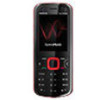Nokia 5320 XpressMusic User Guide - Page 37
Cell broadcast, Service commands, Messaging settings, Text message settings
 |
View all Nokia 5320 XpressMusic manuals
Add to My Manuals
Save this manual to your list of manuals |
Page 37 highlights
■ Cell broadcast Check with your service provider whether cell broadcast (network service) is available and what the available topics and related topic numbers are. Select > Messaging > Options > Cell broadcast. To activate the service, select Options > Settings > Reception > On. ■ Service commands To enter and send service commands (also known as USSD commands) such as activation commands for network services to your service provider, select > Messaging > Options > Service commands. To send the command, select Options > Send. ■ Messaging settings Text message settings To define text message settings, such as the message centre and character encoding used, select > Messaging > Options > Settings > Text message. Multimedia messaging settings To define multimedia message settings, such as which access point is used and whether multimedia messages are retrieved automatically, select > Messaging > Options > Settings > Multimedia message. E-mail settings Select > Messaging > Options > Settings > E-mail > Mailboxes, the mailbox and from the following: Connection settings - to define the connection settings, such as the servers and protocol used. Once the mailbox type has been defined, it cannot be edited. User settings - to define user settings, such as when messages are sent and whether to include a signature Retrieval settings - to define retrieval settings, such as which parts of the messages are retrieved and how many messages are retrieved. Available options may vary depending on the mailbox type. Automatic retrieval - to define settings for retrieving messages automatically at set intervals or when an e-mail notification is received from the server Messaging 37















